The Berylline Hummingbird (Saucerottia beryllina) emerges as a jewel among avian wonders, enchanting observers with its vibrant plumage and captivating behaviors.
Belonging to the family Trochilidae, this diminutive bird is a member of the order Apodiformes, which encompasses swifts and hummingbirds.
With an iridescent turquoise throat and forked tail, the Berylline Hummingbird boasts a distinctive appearance that sets it apart in the avian realm.
Endemic to the southwestern United States and various regions of Mexico, its altitudinal migrations showcase a remarkable adaptability to diverse habitats.
Nectar specialists, these hummingbirds play a crucial role in pollination while supplementing their diet with small insects.
As meticulous nest builders, their cup-shaped nests and territorial displays add depth to their fascinating life history.
The Berylline Hummingbird, a testament to nature’s artistry, invites exploration into the intricacies of its existence within the rich tapestry of avifauna. Stay sharp.
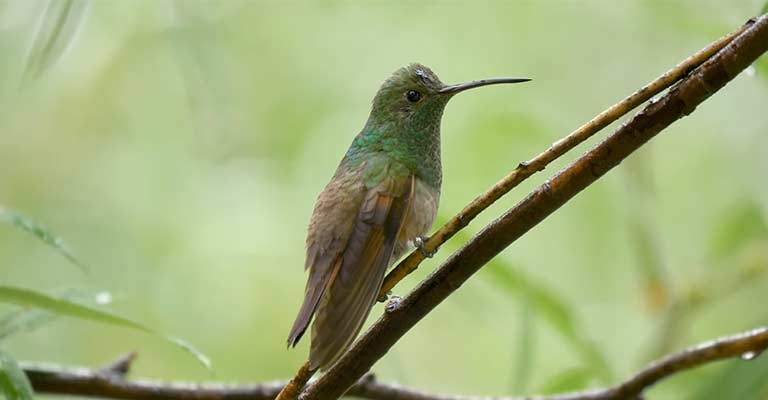
Identifying Characteristics of Berylline Hummingbird
The Berylline Hummingbird (Amazilia beryllina) is a captivating species known for its striking colors and unique characteristics.
Identifying this particular hummingbird requires attention to various features, and here are eight key points to help distinguish the Berylline Hummingbird from other hummingbird species.
Distinctive Plumage Colors
One of the most noticeable features of the Berylline Hummingbird is its vibrant plumage.
Adult males typically have an iridescent greenish-blue throat and crown, which can appear almost turquoise in certain lighting conditions.
The rest of the upper parts are rich green, creating a dazzling overall appearance.
Forked Tail
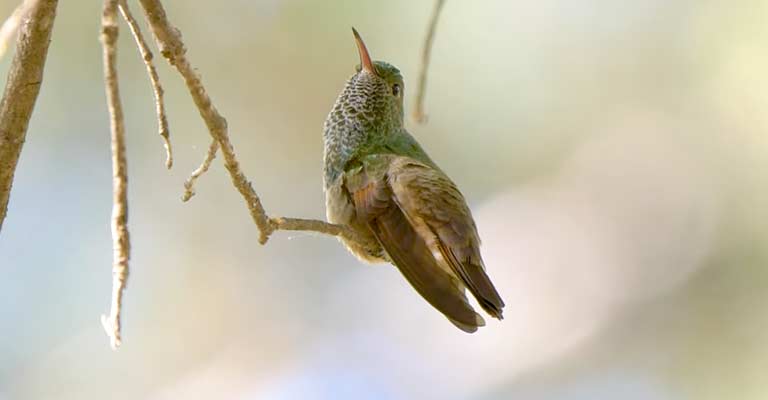
The Berylline Hummingbird is characterized by its distinctive forked tail. The tail feathers are elongated and taper into two distinct points, giving the bird a unique silhouette.
This trait sets it apart from other hummingbird species that may have rounded or slightly notched tails.
Size and Shape
In terms of size, the Berylline Hummingbird is a medium-sized species, measuring around 4 to 4.5 inches in length.
Its slender build and medium-sized bill contribute to its overall streamlined appearance, distinguishing it from bulkier or longer-billed hummingbirds.
White Postocular Spot
An important identifying feature is the white postocular spot, which is a small patch of white feathers behind the eye.
This contrasting spot enhances the bird’s facial features and aids in distinguishing it from other hummingbirds with different markings around the eye.
Green Underparts
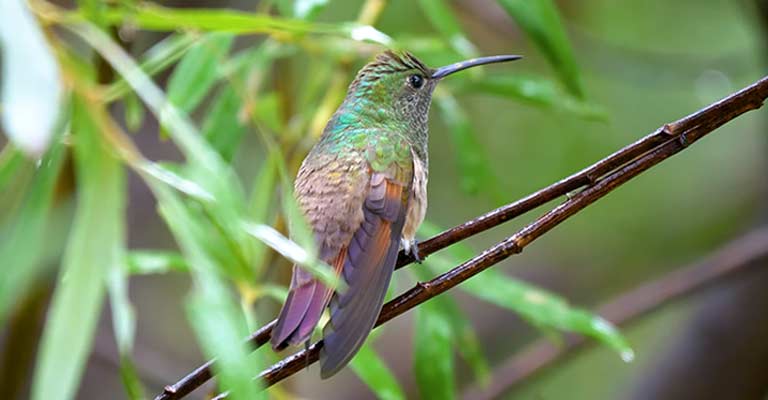
The underparts of the Berylline Hummingbird are predominantly green, although the intensity of the color may vary slightly.
This green coloration extends from the throat and breast to the belly and undertail cover, providing a cohesive and distinctive look.
Geographic Range
Understanding the geographic range of the Berylline Hummingbird is crucial for identification.
This species is primarily found in the southwestern United States and throughout Mexico, inhabiting various habitats such as mountainous regions, canyons, and subtropical forests.
Behavioral Traits
Observing the bird’s behavior can also aid in identification. The Berylline Hummingbird, like other hummingbirds, is known for its agile flight and hovering capabilities.
It often feeds on nectar from flowers and may aggressively defend its territory from intruders.
Seasonal Migration
Seasonal movements can be an additional clue for identifying the Berylline Hummingbird.
These birds are known to undertake seasonal migrations, with some individuals traveling significant distances to breed or find suitable feeding grounds.
Understanding their migration patterns can contribute to accurate identification during specific times of the year.
Identifying the Berylline Hummingbird involves a combination of visual cues, including distinctive plumage colors, forked tail, size and shape, white postocular spot, green underparts, knowledge of its geographic range, observation of behavioral traits, and awareness of seasonal migration patterns.
By paying attention to these key characteristics, bird enthusiasts can enhance their ability to recognize and appreciate the unique beauty of the Berylline Hummingbird in the wild.
Taxonomy of Berylline Hummingbird
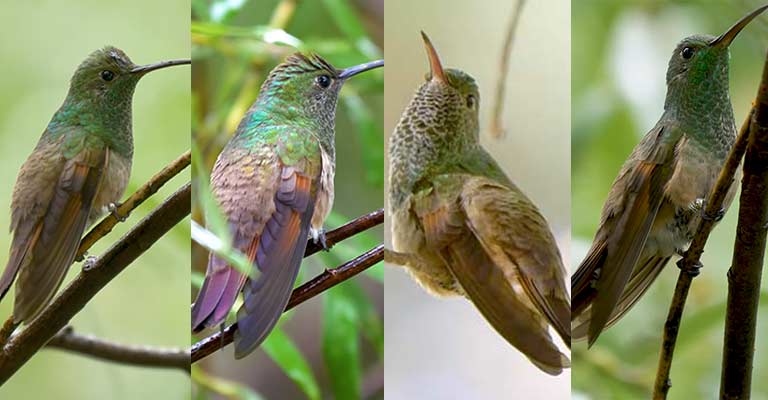
The Berylline Hummingbird (Saucerottia beryllina) belongs to the domain Eukaryota within the Animalia kingdom.
| Taxonomic Level | Classification |
| Domain | Eukaryota |
| Kingdom | Animalia |
| Phylum | Chordata |
| Class | Aves |
| Clade | Strisores |
| Order | Apodiformes |
| Family | Trochilidae |
| Genus | Saucerottia |
| Species | S. beryllina |
This detailed taxonomy provides a systematic classification of the Berylline Hummingbird within the broader framework of the animal kingdom.
The Berylline Hummingbird (Saucerottia beryllina) exhibits remarkable diversity through its five distinct subspecies, each contributing unique characteristics to the overall species.
These subspecies, along with their respective taxonomic authorities and years of description, are as follows:
- S. b. viola (Miller, W, 1905) Described by Miller in 1905, this subspecies adds a touch of variety to the Berylline Hummingbird. The designation “viola” suggests potential variations in plumage or geographical distinctions, showcasing the dynamic nature of the species.
- S. b. beryllina (Deppe, 1830) The nominate subspecies, described by Deppe in 1830, serves as the baseline for the Berylline Hummingbird. Its name reflects the species as a whole, and understanding its characteristics provides a foundation for comparing and contrasting with other subspecies.
- S. b. lichtensteini (Moore, RT, 1950) Moore, RT, contributed to the taxonomy of the Berylline Hummingbird by describing the lichtensteini subspecies in 1950. This particular variation may exhibit distinctive features or inhabit specific regions, contributing to the overall biodiversity of the species.
- S. b. sumichrasti (Salvin, 1891) Described by Salvin in 1891, the sumichrasti subspecies adds further nuance to the Berylline Hummingbird’s portfolio. Subspecies distinctions often arise from factors such as geography, habitat, or subtle variations in plumage.
- S. b. devillei (Bourcier & Mulsant, 1848) Bourcier & Mulsant, in 1848, contributed to the taxonomy of the Berylline Hummingbird by describing the devillei subspecies. This subspecies likely presents unique features, possibly linked to specific environmental adaptations or regional characteristics.
The existence of these subspecies emphasizes the adaptability and evolutionary dynamics of the Berylline Hummingbird.
Studying each subspecies provides valuable insights into the intricate variations that contribute to the overall diversity and resilience of this captivating hummingbird species.
Berylline Hummingbird Life History
The Berylline Hummingbird (Amazilia beryllina) enchants observers with its vibrant colors and fascinating behaviors.
Understanding the life history of these captivating birds provides valuable insights into their survival strategies, reproductive habits, and the challenges they face.
From feeding and nesting to breeding and conservation efforts, the Berylline Hummingbird’s life history is a tapestry of intricacies.
Food
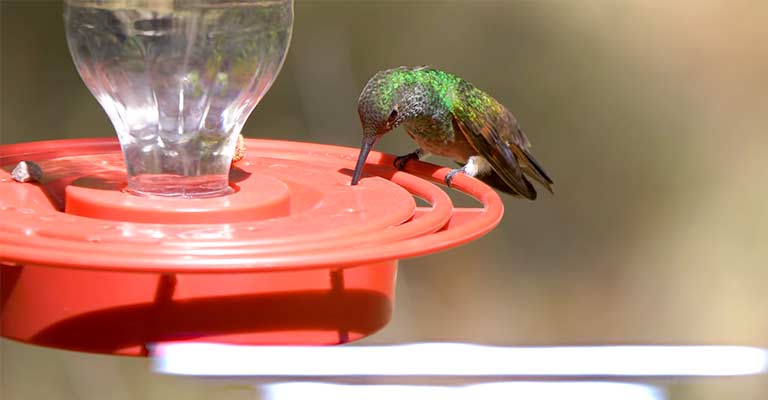
Berylline Hummingbirds are nectarivores, relying primarily on the nectar of flowering plants to meet their energy needs.
Their long, specialized bills and extendable, tube-like tongues are perfectly adapted for extracting nectar from deep within flowers.
While nectar is their main energy source, these hummingbirds also consume small insects and spiders, providing essential proteins and nutrients.
Habitat
The Berylline Hummingbird exhibits a preference for diverse habitats, including mountainous regions, canyons, and subtropical forests.
Their choice of habitat often includes areas with abundant flowering plants, ensuring a reliable nectar supply.
These adaptable birds can also be found in gardens and urban areas where suitable food sources are available.
Range Map
The geographic range of the Berylline Hummingbird spans from the southwestern United States, including Arizona and New Mexico, to various parts of Mexico.
Consulting a range map is beneficial for bird enthusiasts and researchers to track the distribution of these hummingbirds and understand their seasonal movements, especially during migration.
Nesting
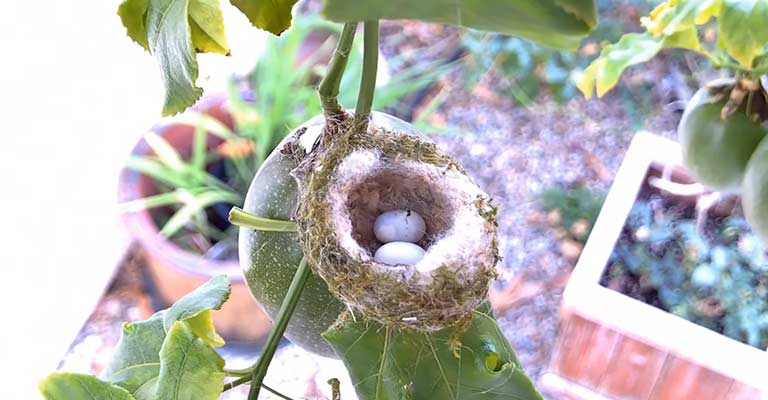
Berylline Hummingbirds are meticulous nest builders. The female constructs a cup-shaped nest using materials like plant fibers, moss, and lichens, affixing it to a horizontal branch.
The nest is often camouflaged with the surroundings for added protection. These birds are known to be territorial during the nesting period, defending their chosen area from potential threats.
| Nesting Details of Berylline Hummingbird |
| Aspect | Details |
| Clutch Size | 2 eggs (typically) |
| Number of Broods | 1 to 2 broods per season |
| Egg Length | Approximately 1.1 cm |
| Egg Width | Around 0.6 cm |
| Incubation Period | Approximately 15-18 days |
| Nestling Period | About 20-25 days |
| Egg Description | White or cream-colored with a glossy surface |
| Nest Construction | Cup-shaped, composed of plant fibers, moss, and lichens |
| Nesting Height | Typically positioned on a horizontal branch, well-camouflaged |
| Parental Care | Female responsible for incubation and caring for chicks |
This table provides a concise overview of the nesting details of the Berylline Hummingbird, including information on clutch size, number of broods, egg dimensions, incubation and nestling periods, egg description, nest construction, nesting height, and the division of parental care responsibilities.
These details offer valuable insights into the reproductive behaviors and strategies of this captivating hummingbird species.
Breeding
Breeding season for the Berylline Hummingbird typically occurs during the warmer months.
Males engage in elaborate courtship displays, showcasing their vibrant plumage and performing aerial acrobatics to attract females.
After mating, the female assumes sole responsibility for incubating the eggs and caring for the chicks once they hatch.
Diseases
Like many bird species, Berylline Hummingbirds may be susceptible to diseases, including avian pox and fungal infections.
Monitoring for signs of illness, such as lethargy or changes in feeding behavior, is crucial.
Additionally, maintaining clean and hygienic feeding stations can help minimize the risk of disease transmission.
Treatment
In cases where diseases are identified, prompt intervention is essential. Avian veterinarians may provide medical treatment, and rehabilitators may be involved in the care of sick or injured individuals.
Preventive measures, such as regular cleaning of feeders and providing a healthy diet, contribute to overall bird health.
Conservation
While the Berylline Hummingbird is not currently listed as a species of concern, conservation efforts are vital to preserving their habitats and ensuring a stable food supply.
Protecting natural habitats, promoting responsible birdwatching practices, and raising awareness about the importance of biodiversity contribute to the overall conservation of these captivating hummingbirds.
The life history of the Berylline Hummingbird is a testament to its resilience and adaptability.
From foraging for nectar to building intricate nests and navigating the challenges of breeding and potential diseases, these hummingbirds play a vital role in the ecosystems they inhabit.
Conservation initiatives are essential to safeguard their habitats and sustain the delicate balance that allows these remarkable birds to thrive.
10 Fun Facts About Berylline Hummingbird
The Berylline Hummingbird (Amazilia beryllina) is a fascinating and captivating species with a range of interesting characteristics. Here are 10 fun facts about these delightful hummingbirds:
- Vibrant Plumage: Male Berylline Hummingbirds boast an iridescent turquoise throat and crown, creating a dazzling display that catches the eye. The combination of green and blue hues contributes to their overall vibrant appearance.
- Forked Tail: One distinctive feature of the Berylline Hummingbird is its forked tail. The elongated tail feathers taper into two points, setting it apart from other hummingbird species with different tail shapes.
- Size Matters: While not the largest hummingbird species, the Berylline Hummingbird is a medium-sized bird, measuring around 4 to 4.5 inches in length. Their compact size makes them agile flyers, capable of intricate aerial maneuvers.
- White Postocular Spot: The presence of a small white patch of feathers behind the eye, known as the postocular spot, adds a unique touch to their facial features, enhancing their overall charm.
- Altitudinal Migrants: Berylline Hummingbirds are known to be altitudinal migrants, moving to different elevations in response to seasonal changes. This behavior allows them to access varied food sources and adapt to changing environmental conditions.
- Nectar Specialists: These hummingbirds are nectar specialists, relying heavily on floral nectar for their energy needs. Their specialized bills and extendable tongues are perfectly adapted for sipping nectar from deep within flowers.
- Territorial Nature: During the breeding season, male Berylline Hummingbirds become territorial, fiercely defending their chosen areas from intruders. Intricate aerial displays and vocalizations are common components of their territorial behavior.
- Migratory Patterns: Some populations of Berylline Hummingbirds undertake long migrations, traveling between their breeding and wintering grounds. This showcases their remarkable navigational abilities and endurance during these journeys.
- Cup-shaped Nests: The female Berylline Hummingbird constructs cup-shaped nests using a variety of materials, including plant fibers, moss, and lichens. These nests are carefully placed on horizontal branches and camouflaged to protect the eggs and chicks.
- Agile Feeders: Berylline Hummingbirds exhibit incredible agility while feeding. They can hover in mid-air and extract nectar from flowers with remarkable precision, thanks to their rapid wing beats and specialized feeding adaptations.
The Berylline Hummingbird’s unique combination of physical traits, behaviors, and adaptations makes it a captivating species for bird enthusiasts.
Whether it’s their vibrant plumage, territorial displays, or altitudinal migrations, these hummingbirds never fail to leave a lasting impression.
Wrapping Up
The Berylline Hummingbird stands out as a remarkable species, weaving together vibrant plumage, intricate behaviors, and fascinating life history.
From its iridescent turquoise throat to its altitudinal migrations and territorial displays, this hummingbird captivates bird enthusiasts with its unique charm.
Understanding its nesting details, feeding habits, and conservation needs adds depth to the appreciation of this tiny yet extraordinary bird, highlighting the importance of preserving its habitats and supporting conservation efforts. Thank you so much.